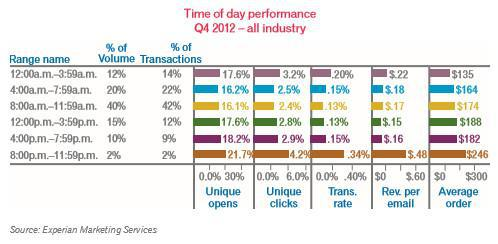7 Indicators You Need More Effective Lead Nurturing Campaigns
7 Indicators You Need More Effective Lead Nurturing Campaigns:
from Business 2 Community
 The phrase “marketing automation” has a nice, robotic sound, doesn’t it? I can’t speak for you, but I know that it makes me think of a shiny assembly line of robots that turn leads into customers. It’s a bit of a misnomer, because the most effective lead nurturing campaigns are continually being tweaked for optimal performance. According to HubSpot’s blog manager Pamela Vaughan, if the four following analytics are sour, that’s a sure-fire sign that something’s gone awry:
The phrase “marketing automation” has a nice, robotic sound, doesn’t it? I can’t speak for you, but I know that it makes me think of a shiny assembly line of robots that turn leads into customers. It’s a bit of a misnomer, because the most effective lead nurturing campaigns are continually being tweaked for optimal performance. According to HubSpot’s blog manager Pamela Vaughan, if the four following analytics are sour, that’s a sure-fire sign that something’s gone awry:
Marketing-Qualified Leads: If your content offers are generating few qualified leads, it’s time to improve your approach. Forrester Research has found that companies who excel at lead generation generate 50% more sales-ready leads.
- Sales-Accepted Leads: Are your campaigns resulting in customers? Closed-loop analytics are critical for bringing your analysis full circle.
- Cost-of-Customer-Acquisition: Even though it all may sound very jargon-y, it’s basic business. If your Cost-of-Customer Acquisition (CoCA) is higher than average customer lifetime value (LTV), your company won’t last very long.
- Time to Customer Conversion: The quality of your lead nurturing efforts can actually determine how long it takes a lead to become a customer. Marketing2Lead has found that automating your workflows can shorten the sales cycle by 23%.
- High Opt-Outs: You shouldn’t have a barrage of unsubscribes following every lead nurturing email. These contacts are fresh, and they’ve recently expressed an interest in your company. According to HubSpot, a healthy opt-out rate is less than 1%.
1. Are You Emailing at the Right Time?
So, here’s the truly irritating thing. Even though email is practically an Internet dinosaur, especially when compared to things like social media, it’s pretty dynamic. What was accepted as a best practice several years ago just won’t work today. Fortunately, we can let you know from the data released by Experian Marketing several weeks ago that it’s currently looking pretty optimal to email on the weekends, and between the hours of 8 p.m. and 4 a.m. Basically, the times your competitors are ignoring:
2. Are You Sending Emails as a Familiar Name?
Email your prospects under a name that they recognize. This could be your company’s name, or it could be the name of your CMO who authored the eBook they downloaded and sent them a thank-you email. It needs to be something they recognize enough to open it and maybe even click-through.3. Is Your Subject Line Honest?
Write an email subject line that conveys relevance and value. It might simply be the name of the blog article or content offer you’re directing prospects towards. Whatever you pick, make sure it’s pithy, and relevant to what’s contained inside the email body. Otherwise, you run the risk of coming across as spammy.4. Is the Message to the Point?
The following email example isn’t from a lead nurturing campaign, to be fair. However, it’s such a shiningly perfect example of what not to do that we couldn’t help but include it:
Your email should be short, personalized, and to the point. Acting really mysterious about what’s on the other side of your link won’t do you any favors in an era where consumers are a little bit wary.
5. Is It Personal?
Getting personal isn’t too difficult if you’re using a major email platform, and it can make a world of difference to your leads. Including a contact’s name has been shown to improve your click-through rates by 14%, according to research by the Aberdeen Group.6. Is Your Content Related and Fresh?
The content that you promote in your lead-nurturing emails should be amazing. It can’t be terrible, or you simply can’t expect prospects to click-through to your website and convert again. Make sure you’re not advertising something stale, which includes outdated research or data. Promoting an eBook you wrote 3 years ago can make your company look less credible.7. Is Your Content Mapped to Their Stage in the Sales Cycle?
When your prospects first downloaded your eBook and became leads, they were likely in the “awareness” stage of buyer readiness. As they move through your funnel, they become increasingly smart about what you have to offer, and begin to develop preferences. Middle-of-the-funnel marketing content should serve to help them establish a preference between you and your competitors. While buyer persona preferences vary widely, use your lead nurturing emails as an opportunity to promote case studies, product comparison sheets, or more advanced eBooks.Lead nurturing is really tough. There are a million factors that go into whether your leads convert into customers, and the marketing automation workflow you wrote a year ago might not work with prospects today. Keep an eye on your metrics, and continuously improve.


No comments:
Post a Comment